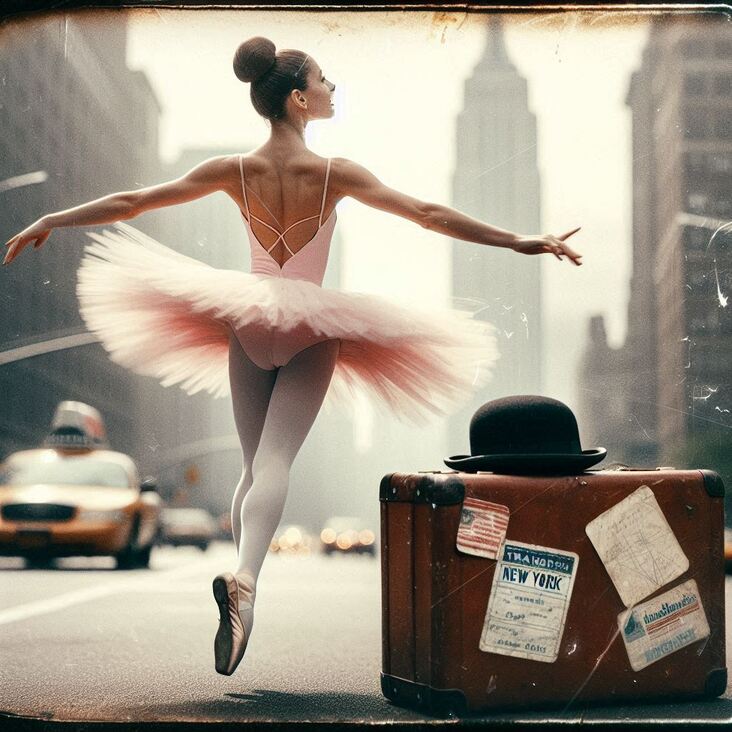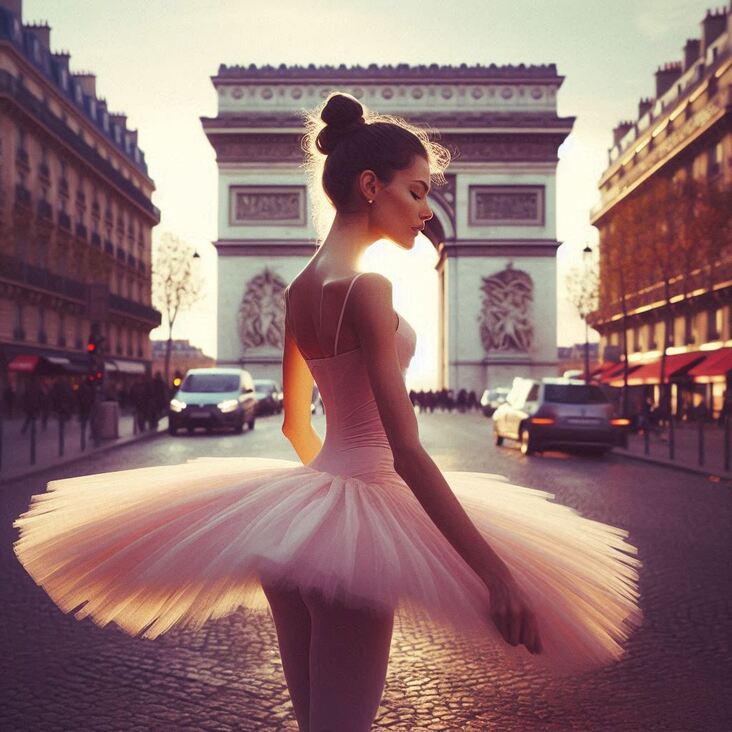
Bonjour from the City of Lights!
It's a glorious Tuesday morning here in Paris, and I'm absolutely buzzing for our weekly #TutuTuesday dive into ballet history! As usual, I'm sporting a lovely pink tutu, it's a new one from my favourite boutique on Rue Saint-Honoré, with delicate lace edging and shimmering sequins - it's perfect for strolling along the Seine!
So, what's on the cultural agenda for 15th April 2025?
Well, the highlight is definitely going to be a magical performance at the Palais Garnier! We're lucky enough to be seeing "Giselle," a masterpiece by Adolphe Adam that's been gracing stages for over 170 years. I absolutely adore "Giselle," with its tragic romance, intricate choreography, and ethereal white tutus - so romantic and hauntingly beautiful!
But before we step back in time to explore the history of the ballet tutu, I've got a little shopping confession for you. I couldn't resist adding a few more treasures to my wardrobe - you know how much I love to combine my love of ballet and fashion! I found a stunning new pair of ballet flats, all white leather with a delicate pearl detailing, and a perfect lilac dress for a pre-ballet show picnic by the Eiffel Tower. Ooh, and speaking of picnics, there's going to be a market near the Tuileries Garden today. I simply must browse for some exquisite little French cheeses, baguettes, and the most divine raspberry macarons!
Now, let's dive back into our tutu timeline!
Back in the early 1800s, the tutu was very different. Forget the delicate, romantic styles of today - think long, full skirts, perfect for dramatic swirling and revealing the intricate footwork. In 1839, Marie Taglioni, the darling of Parisian ballet, wowed audiences by wearing a tutu à la grecque for her performance of "La Sylphide" - think a flowing white gown cut to just above the ankles, but much lighter and less constricting.
The "tutu à la grecque" made history, not just because it showcased Taglioni's unparalleled elegance, but also because it signalled a revolution in ballet costumes! The shorter, tighter "tutu" we know and love was a long way off - the stage needed to see intricate footwork, which these fuller skirts simply couldn't manage.
Enter the tutu in all its glory! As ballet evolved and technique became more demanding, the skirts shortened and the designs evolved too. By the late 1800s, tutus had become more like the ones we wear today, made from layers of tulle, accentuated with tulle frills. A revolutionary dance movement was upon us!
But my fellow tutufans, it's not just the skirt that's evolved over time - the tutu colours and styles have become increasingly expressive, creating captivating visual stories on stage! Think about the iconic white tutu worn by ballerinas in "Swan Lake," the black tutu of the "Black Swan" - a perfect contrast between grace and darkness. And who can forget the rainbow tutu in "The Sleeping Beauty?" Each colour brings a different feel, a different emotion to the story.
Of course, the modern tutu hasn't abandoned the past completely! For example, we're seeing more and more historical references - the "Giselle" tutu in its modern form still references those beautiful long, floating, tutu à la grecque skirts.
There's a reason I travel in time by train, dear readers, it's perfect for exploring the changing fashion scenes. You should have seen the fashions back in the Victorian era - a far cry from the bright, fun fashion scene of the 2020s! You see, tutus have evolved alongside the fashion world, influenced by every new era, taking on trends and reflecting changes.
So, here I am today, in my pink tutu, surrounded by the history of the tutu! I'm off to the Palais Garnier to see "Giselle." This ballet brings back all the romantic stories of Marie Taglioni, the pioneering ballerina and the rise of the ballet tutu. A perfect day in the City of Lights, don't you think?
Don't forget to visit www.pink-tutu.com next Tuesday for another dose of tutu history! I promise, it's gonna be fabulous. Until then, why not head over to our #TutuTuesday Pinterest board for even more historical ballet fashion inspiration!
Always wear your pink tutu with pride,
Emma

